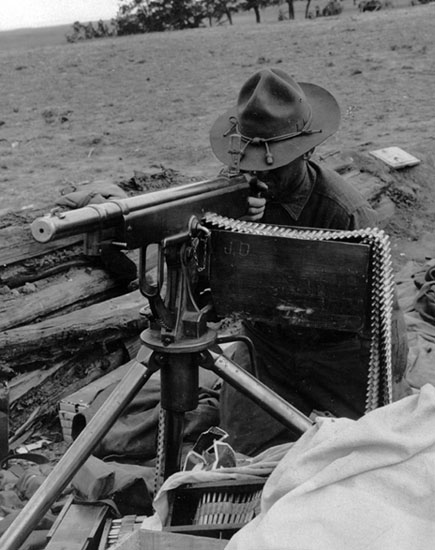The Colt Model 1895 was John Browning’s first foray into machine gun design, and based largely on his previous work with lever action rifles. The gun used a rather unique design, having a gas piston which swung in an arc from a gas port placed near the muzzle rather than reciprocating. The movement of the swinging arm was translated into forward and backward motion of the bolt through a cam, and a rotating cog wheel was used to feed cartridges from a belt. There’s no reason such a design couldn’t work, though the clearance required for the arm resulted in both the gun’s nickname and the absence of any other notable guns copying the idea.
The 1895 was initially adopted by the US Navy in 6mm Lee caliber, but the guns were made until the end of WWI in a variety of other rounds, including .30-40 Krag, .30-06, 7mm Mauser, and .303 British. During the War Colt ceased production and sold the rights and tooling to Marlin, who continued to produce them (most of the photos we have are actually of a Marlin 1917 version of the gun).
The gun was moderately successful, but not outstanding. Compared to its contemporaries (mainly the Maxim and Vickers), its advantages were weight and bulk, as it was fairly slim and air cooled (the action gave it a relatively slow rate of fire, making air cooling more realistic). US use included minor involvements with the escapades in Cuba, the Philippines and China, but not much more. Browning, of course, went on to create much more successful designs with the M2, M1917, and M1919 machine guns.
We have a gallery of photos of a disassembled Marlin-manufacture Digger, which are available on the Colt 1895 page of the Vault.


Be the first to comment